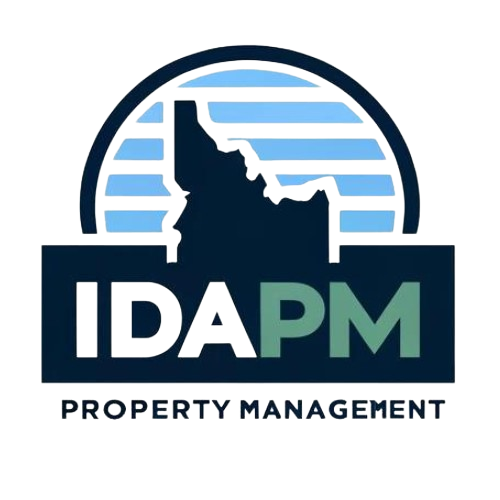
Defining Fiscal Performance: Beyond the Rent Roll
While resident satisfaction is the qualitative measure of success, the ultimate validation in a large asset transfer comes down to fiscal performance. The mandate for The Meadowlands staff was clear: their work had to align with the same high benchmarks applied to every other property in that initial twenty-eight-community transfer. But what does “fiscal performance” mean in this context, especially when looking at long-term asset strength?
Asset Management vs. Property Management: The Strategic View
It’s vital to distinguish between the two roles. Property management—what the on-site team does—is tactical: collecting rent, handling immediate repairs, leasing vacant units. Asset management—the purview of KCG and the higher-level oversight team—is strategic: maximizing Net Operating Income (NOI), planning capital expenditures (CapEx), and steering the property toward its highest long-term value.
For The Meadowlands, the new management system had to provide the *data* that allowed the asset managers to execute their strategy. This means:
- Predictive Maintenance Reporting: Moving away from reactive fixes (which drive up costs) to scheduled, preventative work that preserves the physical capital of the 225 units.. Find out more about WinnResidential KCG 4000 unit management transition.
- Leasing Velocity and Retention Metrics: Ensuring that local leasing efforts translate into a healthy occupancy rate (the goal being to avoid the drops seen in less managed portfolios) and that renewal rates reflect high resident satisfaction.
- Expense Control: Leveraging the larger management company’s national scale for better pricing on insurance, utilities, and major vendor contracts—savings that flow directly to the asset’s bottom line.
The Long-Term Play: Appreciation and Stability
The investment strategy underpinning a portfolio of this size is rarely about quick flips; it’s about sustained value appreciation. Real estate investment analysis consistently shows that properties managed to a high, consistent standard experience lower vacancy, attract more reliable tenants, and ultimately see greater long-term appreciation. When the team at The Meadowlands executes flawlessly, they aren’t just hitting monthly targets; they are actively contributing to the owner’s goal of creating a resilient asset poised for maximum valuation years down the line. This requires a level of financial consciousness from the on-site teams that only excellent training and clear KPIs can foster.
Navigating the Complexity: Four Pillars of Portfolio Uniformity. Find out more about Managing The Meadowlands Madison Wisconsin property guide.
The integration of The Meadowlands into a national network demonstrates that managing a diverse portfolio is less about *what* you manage and more about *how* you enforce standards across the dissimilar parts. To successfully knit together assets across different regulatory and economic environments, four pillars of uniformity must be established and rigorously checked. As of October 2025, these remain the critical areas for any management transition.
Pillar 1: The Compliance & Regulatory Matrix
In a country with a patchwork of housing laws, compliance is a constant liability. A failure to adhere to Fair Housing laws in Wisconsin is just as severe as a failure in New York, but the specific documentation required to prove adherence can differ significantly. The new management structure must have a centralized compliance team that translates federal and state regulations into **site-specific checklists** for every property, including The Meadowlands.
- Actionable Tip: Establish a “Regulatory Watch List” that is reviewed weekly by regional management, ensuring that any change in Madison’s local landlord-tenant ordinances is immediately flagged and integrated into the on-site team’s procedures, preventing costly oversight.
Pillar 2: The Resident Communication Protocol. Find out more about Affordable housing portfolio management consistency tips.
As noted earlier, tenant trust hinges on communication—and consistency in that communication is key. If one property uses a dedicated resident portal and another relies only on email, the overall resident experience suffers from fragmentation. The goal must be to standardize the *frequency* and *channel* of key communications, even if the specific content is localized.
- Actionable Tip: Mandate a standard “Resident Update Cadence”—e.g., monthly newsletter template, 24-hour turnaround for all non-emergency maintenance tickets, and scheduled “Meet the Manager” open hours. This levels the playing field for residents at all 28 properties. You can find more on resident satisfaction metrics as a measure of success.
Pillar 3: Technology & Data Standardization
The sheer volume of data generated by 225 units across multiple states is staggering. To make sense of it, the technology stack must be uniform. All maintenance requests, leasing applications, and financial reporting must flow into the same system. This centralization is what allows the asset management team to compare The Meadowlands’ performance against the portfolio average in real-time. If the predecessor company used idiosyncratic software, the transition team must ensure a clean, auditable handover of all essential records to the new system—a step often overlooked until it causes significant payroll or legal headaches.
Pillar 4: The Vendor & Capital Expenditure Vetting Process
For a physical asset like The Meadowlands, the management team’s relationship with local vendors directly impacts the bottom line. A centralized process doesn’t mean forcing the Madison team to use a vendor from Texas, but it *does* mean that all vendors must pass a centralized vetting process that includes insurance verification, background checks, and, critically, adherence to the new management company’s safety and invoicing standards.. Find out more about KCG Cos. property management retention strategy strategies.
Beyond the Takeover: Cultivating Long-Term Asset Strength in 2025
We are now firmly planted in late 2025, a time when market fundamentals in commercial real estate—from interest rate sensitivity to evolving tenant expectations—are demanding higher performance than ever before. The initial management transition, exemplified by The Meadowlands, was just the starting gun. The real test is sustaining the quality gains over the long haul.
From Stabilization to Perpetual Improvement
A successful takeover stabilizes operations; long-term success requires perpetual improvement. This means treating the integration not as a one-time event but as the beginning of a new, continuous management cycle. For a community of 225 units, this requires leadership that understands the difference between maintenance and asset *preservation*.
Practical Hurdles That Require Foresight:. Find out more about WinnResidential KCG 4000 unit management transition insights.
- The Deferred Maintenance Catch-Up: Often, properties transferred during a major deal have deferred small maintenance items. The new team must rapidly audit and categorize these into “Immediate/Safety,” “Short-Term/Resident Satisfaction,” and “Long-Term/CapEx Planning.”
- Capital Planning Alignment: The Meadowlands’ asset needs to fit into KCG’s multi-year capital plan. Is the roof schedule lining up? Are reserve studies being updated on schedule? The management transition must ensure that the local team is feeding accurate, timely data up the chain so that large CapEx decisions are sound and not reactive.
- Talent Retention Beyond Day One: The initial retention of the 83 employees is great, but what about year three? The long-term health of The Meadowlands depends on keeping those skilled professionals motivated and challenged. This requires a clear career path within the larger WinnResidential structure, turning local property managers into future regional leaders.
The Role of External Scrutiny in Maintaining High Standards
In an environment where asset valuations are keenly scrutinized, transparency is the best defense against skepticism, whether from lenders, investors, or the residents themselves. The commitment to high standards often involves third-party verification. A management company aiming for true asset strength will often subject its properties to external audits or certifications, much like new green building standards being adopted across the industry. This external validation proves that the consistency achieved internally is robust enough to withstand outside review.. Find out more about Managing The Meadowlands Madison Wisconsin property insights guide.
Conclusion: The Unseen Architecture of Successful Management Transfers
The case of The Meadowlands in Madison, Wisconsin, is more than just a footnote in a large corporate announcement. It is a microcosm of the fundamental challenge facing modern real estate ownership: how to manage vast geographic diversity while delivering a singular, high-quality resident experience. The success of that transition, as we analyze it from the vantage point of October 2025, rested not on flashy new software or sweeping policy changes, but on the strategic integration of people and process.
Key Takeaways for Any Portfolio Leader
- Ground the Abstract: Always identify a tangible asset (like The Meadowlands) to represent the scale of your transition. It focuses execution.
- Prioritize the Incumbent Team: Local knowledge is irreplaceable. Retain and rapidly train existing on-site staff to bridge the operational gap immediately.
- Consistency is the Product: A national portfolio lives or dies by its uniformity in service delivery and compliance, regardless of local market variation.
- Focus on the Long View: Operational consistency must serve the ultimate goal: maximizing long-term asset strength and appreciation, which requires integrating property-level data into strategic asset management.
In the end, the story of The Meadowlands is a reminder that property management isn’t about shuffling keys; it’s about weaving a complex structure of human capital and standardized process so tightly that residents—and asset owners—rarely notice the seams. It’s the unseen architecture holding the value in place.
Engage Your Experience
What has been your biggest challenge when an established management team hands over the keys to a community you manage? Did you prioritize staff integration or process overhaul first? Share your insights below—we are always keen to examine the operational challenges across the broader real estate landscape.
